Media | Articles
9 roadside repairs that tested my DIY limits
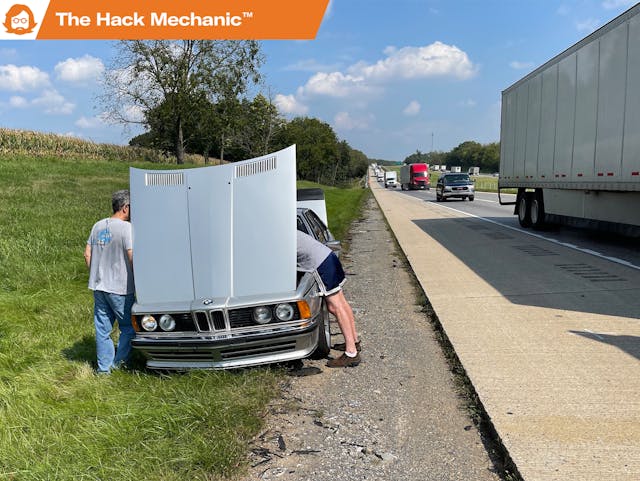
If you’re tooling around close to home in a vintage car, breakdowns aren’t really that big of a deal. Your Hagerty or AAA coverage will probably tow the car home for free or close enough, and you can fix it there. But if you’re road-tripping a car, breakdowns are a much bigger deal. Even if the cause is something you think you can fix, you really don’t want to be in a situation where you need to be under a car when trucks are whipping past only 10 feet away. Anything you know is wrong with a car that is likely to put it in the breakdown lane really should be fixed before a trip.
That having been said, breakdowns happen, and when the cause is obvious and easily addressable, roadside repairs get made. To be clear, whenever possible, don’t literally repair it roadside—if you’re on the highway, limp the car to an exit and find a parking lot instead. Cooling system and oil pressure issues, however, carry a special urgency, as failure to act immediately can result in a cracked head or a lunched engine.
When a roadside repair is ingenious or difficult, it turns into the stuff of legend. I’ve heard stories about broken fan belts in Volkswagens being addressed (or undressed) by convincing a female companion to surrender her panty hose and fashioning a belt out of it (likely a relationship-cementing or a relationship-ending event). One South African friend told me a story about engine failure in a remote area and a weeks-long process of walking miles and hitchhiking while carrying a cylinder head to and from a machine shop. And I witnessed two good friends of mine replace a BMW 2002’s blown head gasket in a hotel parking lot in under an hour and a half.
Now, nothing I’ve done approaches these feats. But after 47 years of wrenching, these are the roadside repairs that stand out above the usual wiring-up of hanging exhausts, reseated distributor caps, “your alternator won’t charge without excitation current from the battery warning light” fixes, and getting a car to start by tapping on the positive battery clamp, the starter, or the electric fuel pump, then going “Ayyyy” like Fonzie.
1. Water pump failure in the Triumph GT6+
In high school, I had been a bicycle guy—riding bikes, fixing bikes, pulling bikes out of the trash and rejuvenating them with parts from other bikes. The summer before college, I was planning on cycling cross-country, which scared the bejesus out of my mother. She blatantly bribed me by offering to buy me a car. I took the bribe and bought the then-six-year-old 1970 Triumph GT6+, easily the worst car I’ve ever owned.
The first of many failures occurred when the car overheated in the hill country north of Amherst, Massachusetts. I limped it to that night’s destination, a friend’s father’s house. I didn’t know much about cars, but knowing bikes, to me the car was just another mechanical system. I could see that the part where water was streaming out had a pulley and a belt on it, and deduced that it was the water pump. I made a few phone calls, found a shop in nearby Hadley that had one, hitchhiked there, and bought it … and the gasket … and the sealant … and the antifreeze.
My friend’s father had enough tools for me to do the job. I had my first taste of the joy of getting myself out of trouble. There were other more devastating mechanical failures to come, and of course the requisite Lucas electrical system problems, but if anything is ground zero for me becoming The Hack Mechanic, it was this.

2. Points closing up in the VW Bus
In early January 1982, my then-girlfriend and now-wife Maire Anne and I moved from Boston down to Austin, Texas, in her rotted 1971 VW Bus with no heat. After surviving an ice storm in Pennsylvania, we finally made it to warmer climes, but somewhere in Arkansas, the bus lost power and sputtered into the breakdown lane. As the de-facto mechanic of my girlfriend’s car, I’d read John Muir’s classic How to Keep Your Volkswagen Alive: A Manual of Step-By-Step Procedures for the Compleat Idiot cover-to-cover. This was my first “it’s almost always the points” experience—due to pitting on the point faces and wear in the little nylon block that runs on the distributor shaft, the point gap had closed up until it no longer triggered the coil. I pulled the points, filed them, did the trick of gapping them with a matchbook cover (which is about the 0.016-inch needed), and voila. I think this is why Maire Anne later married me.
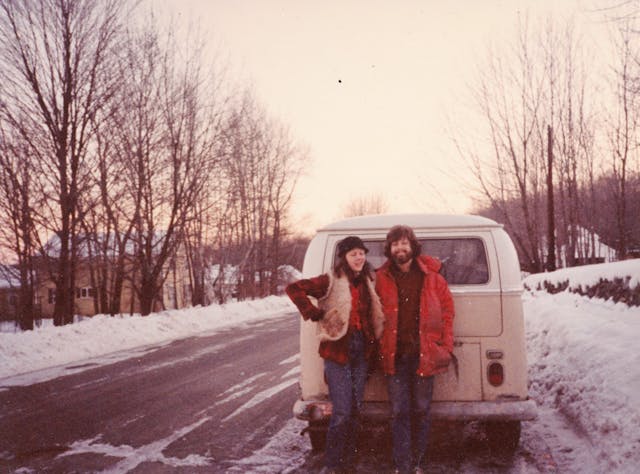
3. Fixing the 2800CS in the middle of a busy intersection
In 1988, I looked at two BMW 2800CS E9 coupes from a salvage yard north of Boston. One was a wrecked picked-over parts car, but the other surprised me by being rusty but whole, and starting and running. I bought them and decided to drive the good one home, use it as a winter beater, and part it out the following spring (I had two other E9 coupes). A few days later, Maire Anne drove me over to the junkyard in our 1983 Volvo 245GLT wagon. I slapped a plate from my daily driver on the 2800CS, jump-started its doornail-dead battery with the Volvo (incredibly foolish—I should’ve brought a fully-charged battery from another car instead), verified that no fluid was gushing out from under the engine compartment, and off we went. Through traffic. At rush hour. Ah, youth. When I was trying to get through the very busy intersection of Rt. 28 and Memorial Drive, I didn’t feed enough gas coming off the clutch, and the car stalled. Since the battery was dead, there was no re-starting it.
So, there I am in the middle of a city intersection at rush hour in a dead, rusty, uninsured, unregistered old car that looked like Beatrix Kiddo in Kill Bill II when she escaped from being buried alive. With it nearly impossible to position the Volvo nose-to-nose to the 2800CS to jump it, I motioned Maire Anne to drive the Volvo to the curb. I ran over, popped open the Volvo’s hood, yanked out its battery (also foolish, as doing so on a running car risks blowing the diodes in the alternator, but necessary), wrapped the positive battery cable in a glove so it wouldn’t short to ground, said to Maire Anne, “Whatever you do, don’t stall,” ran into the intersection with the Volvo’s battery, threw it in the 2800, started it, and drove home. Certainly not one of my smarter moves, but a good story.

4. Reconnecting the half-axle on the Vanagon
Before I began my serial relationship with Suburbans, I had Vanagons. They were weird cars but cavernous inside. I think I went through half a dozen of them before we finally bought the Toyota Previa, which also was weird but was more reliable. When I bought the first Vanagon, the clutch was slipping badly. I dropped the engine (very similar to the old VW busses—support it on blocks, unbolt the bumper, unbolt the engine, roll the bus forward) and replaced the clutch. A few days later, my sister needed to borrow the Vanagon to pick up a piece of furniture. That afternoon, I got a call from her from a payphone (this was pre-cell-phone days) saying that the Vanagon began making a loud rumble, then very loud whacking sounds came from the back.
She and the car were a few miles away. I shot over there with my tools and found that one end of one of the half-axles was flopping in the breeze. Apparently I hadn’t torqued down the ring of Allen-head bolts holding it to the flange on the transaxle. I crawled under the car, tightened things up, and sent my sister on her way. Some 35 years later, she will still sometimes needle me, “Remember when the axle fell off the Vanagon you leant me?” I, of course, will correct her and say, “It wasn’t ‘the axle.’ It was one of the half-axles. And it didn’t fall off—one end just got loose. And I came immediately and tightened it back up, didn’t I?” The funny thing is that, looking back on it, I can’t remember why I had to detach the half-axles at all. Maybe there was some reason why I needed to pull the engine and transaxle together.
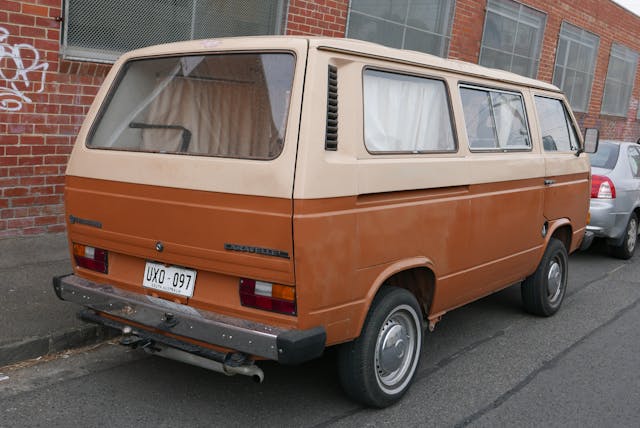
5. Unadjustable fan belt on a 635CSi
I had a 1985 BMW 635CSi that had been gifted to me by my son’s girlfriend’s father. He was mainly a Mercedes guy, and his Mercedes mechanic couldn’t figure out why the 635 wouldn’t start. It turned out to simply be a bad distributor cap. That, an air flow meter, and new injectors got the car running well, but it was by no means well-sorted, and the young man who bought it from me surprised by saying that he wanted to join my convoy on the 2000-mile round trip to The Vintage in Asheville. I warned him that this was risky. He said that he understood that I wasn’t his traveling mechanic, but I couldn’t help but feel a sense of responsibility for both him and the car. Sure enough, on the drive down, the car’s temperature began creeping up and eventually headed for the red zone.
We took the next exit. I found that the belt was slipping even though there was no audible squealing, and the slippage resulted in the water pump not continuously spinning. I tried to adjust the belt, but the bolt in the adjuster track was at the end of the slot, indicating either that the belt was wrong to begin with or had stretched. I was afraid that, if he drove the car hot, he’d crack the head, and I was about to search for the nearest auto parts store when I noticed that next door to the convenience store we’d pulled into was a machine shop where we were able to borrow a round file. I removed the bracket, and Jordan (“the kid”) did the hard work extending the adjustment slot (hey, it was his car). It worked like a charm. We later found a shorter belt, but never needed to install it.
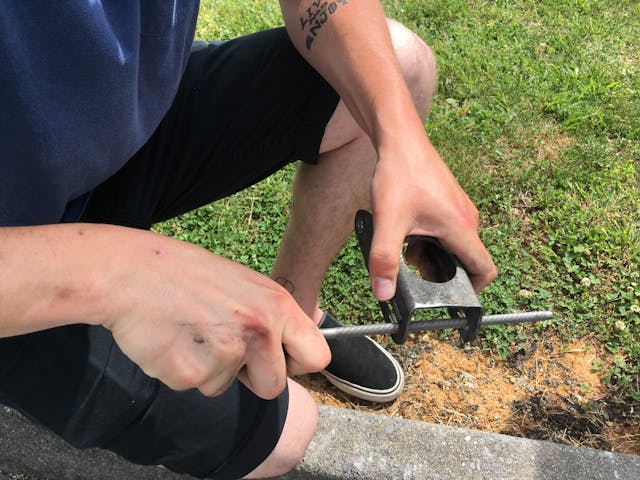
6. Cracked fan on a Euro 635CSi
I was driving my ’79 Euro 635CSi on the return trip from The Vintage—the same trip where I fixed the kid’s unadjustable fan belt. During a rest stop, I opened up the hood to check the oil and was stunned to see that two blades had flown off the belt-driven cooling fan. The 635CSi’s six-cylinder M30 engine was used in BMWs from 1968 through ’95, but it went through three different water pump, fan clutch, and fan configurations, and new parts are no longer available for anything other than the final configuration. I put out the call to friends on Facebook, but unless someone had an old fan, I’d need to replace not just the fan but also update the water pump, the fan clutch, and the pulley.
I removed the fan lest it lose another blade and slice open a coolant hose. This required removing the radiator, which in turn required dumping the coolant. Fortunately I was able to send one of my road trip companions to a nearby Autozone for a catch basin and a few gallons of antifreeze. Driving without a belt-driven cooling fan is usually fine when cruising at highway speeds, but if there’s not enough air flow over the radiator at low speeds or in traffic, it can send temperatures into the red and crack the head. I made a quick wiring mod that allowed me to run the electric pusher fan that’s in front of the A/C condenser without turning on the A/C, and let the car idle in the parking lot to test it. The temperature seemed to top out at about 3/4 of the way up the gauge, so I felt pretty good about making a run for it.
In the meantime, a friend about 150 miles north and on the way home messaged me that he had every part to do the full water pump/clutch/fan/pulley upgrade. We made it to his garage without incident, where I installed the newer-style cooling components. The car’s cooling system was fine until…

7. Leaky heater hose on the same car
A few years later, again on the way to The Vintage and driving the same ’79 Euro 635CSi, I had another cooling system issue. The irony was that, having experienced cooling system issues the last time I road-tripped the car, I wanted to be certain everything was copasetic, so I inspected the cooling system. I found a heater hose that was obviously ballooned and soft. The hose was listed as no longer available from BMW, but I found one as new old stock (NOS) on eBay. I clicked and bought it, but wasn’t certain it would arrive in time, so I hunted around on my parts shelves for a replacement. I found what appeared to be a perfectly good used heater hose. It was clearly better than the ballooned one in the car, so I installed it.
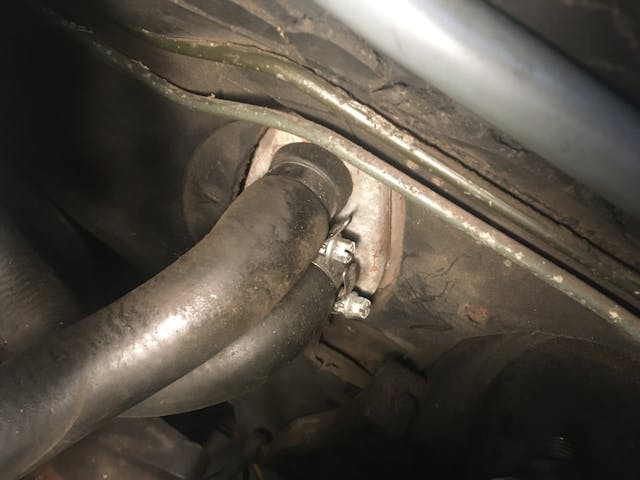
When the NOS hose arrived, I tossed it in the trunk as a spare. On the way to The Vintage, the car’s temp crept up, but did so slowly enough that I thought it was just due to the outside temperature increasing as we headed south, combined with the car rolling up and down the Blue Ridge mountains, but when it tickled the red, I pulled over. I-81 is one of the most heavily trucked routes in the country, so I made it a point to get the car as far off the breakdown lane as I could. Sure enough, the engine was peeing coolant … out the hose I’d just replaced.
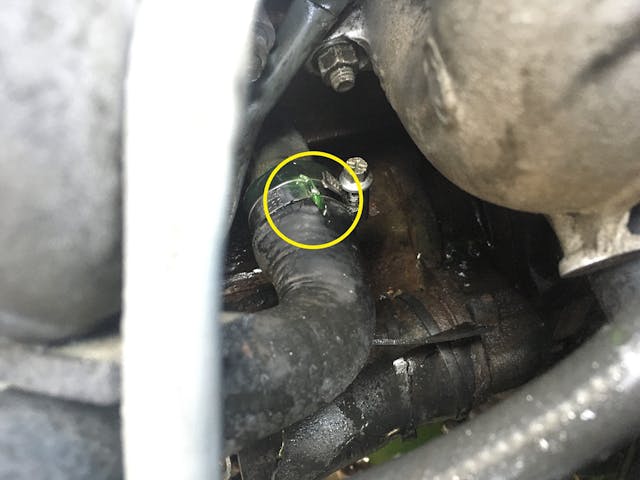
Fortunately, I had the NOS hose in the trunk. While I was waiting for the engine to cool down, I sent my travel companions for antifreeze, at which we all had a serious déjà vu, as the same thing happened with the car and the same people three years prior. It was yet another reminder how much easier these things are when you’re not trying to act like a lone wolf.

8. High beam stalk disintegrates on the Merritt Parkway
The Merritt Parkway is a windy two-lane road north of New York City with a lot of elevation changes. When I was younger, I used to love the Merritt for that reason, but in my dotage I find it stressful due to the 85-mph traffic, the sudden squeezing of two lanes down to one due to construction, the lack of illumination at night, and the repeated experience of coming over one of the rises and having to jam on the brakes due to the sudden sea of red lights. As such, I usually avoid it, but sometimes I’ll just do whatever Waze says, and if it takes me via the Merritt, so be it. Such was the case on one of my trips to The Vintage in a 2002tii.
It was night. Traffic was light to moderate, so there was a lot of toggling the stalk between low and high beams. During one such flick, the stalk fell apart in my hand. What’s the big deal, you might say? Did it fail in the low or high beam position? That was the problem. Neither—my headlights went completely out. With the Merritt Parkway’s lack of lighting, I was abruptly plunged into darkness. I slowed down while fumbling with the stalk to see if I could restore lighting. Fortunately I found one fragile position where the lights came back on, but they went out if I deviated in the slightest. I drove very carefully that way—one hand on the wheel, the other on the stalk—until I came to a rest area. On road trips, I always pack a roll of wire, a variety of connectors, and a crimping tool, so I had no question that, if necessary, I would wire the lights directly to the fuse box, but I thought that I’d first try fixing the stalk. I took the upper and lower panels off the steering column to expose the stalks and found that the potted metal tabs holding the Bakelite back of the stalk in place had broken off.
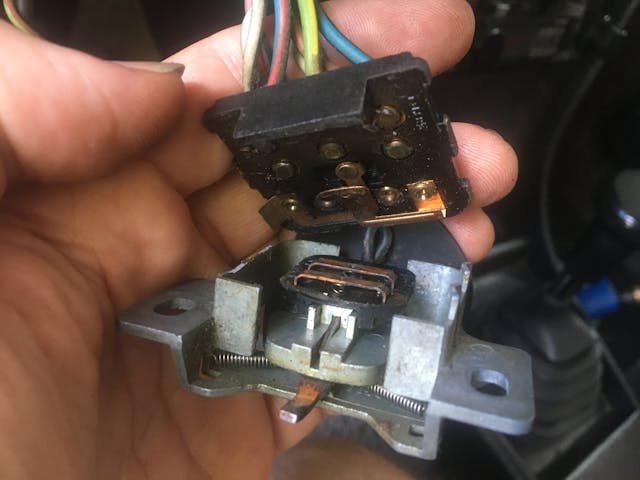
I carefully put the stalk back together, held it together with zip ties, re-attached it, and tested it. It held. For the rest of the trip, I flicked the stalk very carefully lest it fall apart again, but it’s now eight years later, and those zip ties are still in place.
9. J-B Welding a cracked head
I’d say that I’m saving the best for last, but I already wrote about the time that I J-B Welded a cracked cylinder head in a lot of detail here. It almost doesn’t count as a roadside repair, as it didn’t technically fail on the road, and as it certainly wasn’t fixed roadside—I was in a first-class repair shop with the advice of a seen-it-all mechanic—but it was still enormously satisfying to stop the dripping of oil out a crack at the top of the head onto the exhaust manifold using J-B Weld and be driving home a few hours later.

How about you folks? What was your favorite roadside repair? Wipers pulled back and forth with rope? Throttle controlled with a hand-yanked cable? Tell me what you’ve got.
***
Rob’s latest book, The Best Of The Hack Mechanic™: 35 years of hacks, kluges, and assorted automotive mayhem is available on Amazon here. His other seven books are available here on Amazon, or you can order personally-inscribed copies from Rob’s website, www.robsiegel.com.
Check out the Hagerty Media homepage so you don’t miss a single story, or better yet, bookmark it. To get our best stories delivered right to your inbox, subscribe to our newsletters.
Marketplace
Buy and sell classics with confidence













Not so much a repair, more coaxing it back home without having to call the RAC for a truck.
My brother in law has a 69 dodge charger. Yes it is orange and has the big block too.
He asked me to take it to a photo shoot in central London as he couldn’t make it so I said yes. I love driving that car, even though it’s still on drum brakes all round.
The drive from his house near Windsor into London and to the studio in Hackney went well, lots of thumbs up from passers by, but the engine started to run rough as I rolled into the venue.
We move it around a few times for the shoot then when it was time to leave I tried to start it and got nothing.
I phoned the RAC and their guy came within the hour, tested a few things, got it started but said the coil was the problem and to keep an eye on it.
I set off for windsor through central London and by now it was dark.
Luckily London is well lit and I just used side lights but the engine was sounding rough.
By the time I’d got to King’s Cross it was trying to cut out at traffic lights so I had to coast in neutral and blip the throttle. I’m sure onlookers thought I was showing off.
A few miles further, it started to run on 7 cylinders but there were no lights to stop at for a few more miles so I had a chance of making it without calling for a recovery truck.
By the time I’d got within a mile of his drive, it was down to 6 cylinders and I was scared of stopping.
Fate and timing meant I had to stop at the last set of lights between me and his drive.
I crossed everything and tried starting it.
Luckily, It sputtered into life and I limped it on 6 cylinders until it suddenly died on me as I turned into his drive.
He came out and I gave him the keys, telling him it’s dead.
He opened the bonnet, touched the coil which was glowing red hot and said he’d changed it for a better one before sending me off on the shoot but wasn’t sure if it was ok.
Moral of the story is make sure you replace parts that you know work.
It was an epic journey though
I was driving a 1974 Gremlin, my cheap college car, home after a date one night. That car taught me many home mechanic lessons, as all I could afford was to do it myself. This night was the most notable challenge when I noticed a significant loss of braking power. I was on a dark rural road in upstate NY, after midnight and only had a few basic tools in the glove compartment. I managed to make it to an intersection with a street light and stopped to investigate. I couldn’t see anything leaking or broken, so I decided to check brake fluid level in the master cylinder. Luckily I had a screwdriver to pop it open. One of the 2 chambers was almost empty of fluid. I had the idea to use a discarded Dairy Queen spoon (from the desert of that mentioned date) and spoon fluid from one chamber to the other. With both systems now 1/2 full, I regained break capability and was able to drive cautiously the 5 miles home. The next morning was able to see the culprit was a leaking wheel brake cylinder on one of the Gremlin’s 4 drum brakes.
Since my only roadside repair stories involved a 1974 Lotus Europa, when you started your article with one about a Triumph I figured there would be a lot more about British cars. I was very surprised that two thirds of them were about BMWs! Is there a message there?
Gary, yes there’s a message there—the constant breaking of the Triumph warned me off Brits for 35 years. All I drove was German cars, so of course that’s what all the breakdown stories are about.
When I was in high school my geology class took four weekend road trips around the state in a battered old school bus driven by our teacher. On one of those trips the air brakes had a leak that grew progressively worse. By Sunday afternoon the compressor could no longer keep up and we ground to a halt in the parking lot of a closed auto repair shop far from anywhere. After figuring out that the leak was in one of the lines near the compressor and easily accessible me and a couple other guys started digging through the trash dumpster and found a discarded radiator hose. That hose, with some duct tape and baling wire, did the trick nicely. Less than an hour later we were back on the road.
Two come to mind – using a nailfile to clean the points on a Morris Minor SU fuel pump, and Dad finding out he had a blown welsh plug on a Slant-6 (The hard to get to one behind the manifold join) so used gasket cement to “Glue” the next size down one into place. Plug was still there 12 months later
This is a Studebaker story.
My brother-in-law and I found this really great 49M series one and a half ton dump truck. I had to have it.
We left Portland Oregon and picked this up on the east side of the Coast Range headed for the little town of Manzanita Oregon.
We figured his 1950 half ton pick up had plenty of guts to get up over the coast range. Well we made it just fine, even though slowly up the hills, but what we had not figured out was the inefficiency of the half ton pick up to stop.
All things being equal we did what two clever young men would do. We ran a rope back to the shaft break on the one and a half ton dump truck and whenever I needed to stop I would step on the brakes and he would pull on the stick tied to the end of the rope that would slow the 1 ton truck down.
This seemed to be working very well until we came to the intersection, a T intersection, on Highway 101 where we needed to turn north. I stepped on the break he pulled on the stick with the rope tied to the shaft break and the one and a half Ton dump truck came out of gear rendering the shaft break completely useless.
Needless to say there were no cars when I made the 90° turn that looks like some thing that should’ve come from the old show laugh in.
I never did restore the truck and finally sold it 20 years later to a collector.
We both still shake our heads 45 years later at our good fortune.
It does not count as road side because we weren’t on the road, we were at That Thing in the Desert, a large festival that occurs in Northern Nevada. In 2008, back when the event was slightly better (haha) we had worked long and hard to get the Snail Art Car built. It is based on a 1966(?) VW Bug where removed the body and built a large snail body, which necessitated moving the gas tank a bit lower than stock. The Snail worked fine the few times we drove it around the lot before going to the event, but when we got there it had fuel starvation problems – the stock mechanical pump just wasn’t up to it.
So, we asked around and someone had an electric fuel pump, which we had installed in 45 minutes. If this had happened back in Oakland, there is no way that we could have diagnosed the problem, gone to the parts store and back and installed it in less time.
That pump worked great for years!
Late 1980’s. I was driving through the crowded and congested Northeast Corridor of Interstate 95. Returning home to The Bronx from a British Car Show that took place outside of Baltimore. The fuel pump in my 1960-1958-1961 MGA (yes, it was a combo of all of those years) failed. I knew it was common for the fuel pump points to stick and I also knew that a good “whack” would often restore that soft but reassuring SU blip-blip-blip…blip that meant fuel will soon be flowing.
I stopped on the shoulder of “95” and loosened the fuel pump bracket as much as possible, leaving just enough thread that the pump would not fall off the car and be dragged along by the fuel lines. Whack-and-go.
Each time the pump quit after that, I coasted into the bumpy shoulder or rumble strips and and my very loose and bouncing pump shook itself back to full blipage. Got home safe and sound.
This goes back aways – to about 1966. And it’s not really about me, but about my father, a true hack mechanic. I was driving my first car – a 1957 Austin Healey 100-6 — south on the Mass Pike, probably going home to Connecticut after visiting my sister near Boston. All of a sudden – no power. So I pull over as far as possible – of course, it’s night. I’m pretty clueless about the problem, not having inherited any hack mechanic skills, and I have absolutely no recollection about how I reached my father but somehow I did and not all that much later he arrived on the scene. The Healey has an electric fuel pump under the little jump seat behind the driver’s seat which my dad had already diagnosed as the problem. On the Mass Pike, at night, with only a small toolbox, he somehow managed to take the pump apart, find that the bakelite base had cracked and collapsed, tape it up with electrical tape, put it back together, and send me on my way. Thanks Dad!!!
Driving home one day on a 2-lane paved road, I passed my elderly neighbor’s Ranger on the shoulder. Looking into the mirror as I drove past, I saw a pair of legs under the front bumper. I pulled over onto the shoulder and backed up to the truck. Mr. Murphy (as we knew him) climbed out and explained that the tie rod had come apart at the ball joint. He had just popped it back in place with his scissors jack and was about to wrap a rope around it to make it home, a distance of about two miles. I slid under the truck and completed the job and then followed him home in my car.
I shouldn’t have been surprised, as he had grown up on a farm, where mechanical repairs are common.
I know you LOVE old british cars, so here’s one. I was driving my 74 Spitfire home after some engine work and suddenly had no accelerator. Upping the bonnet, I saw that the cable connection had lost its pin, so I had to make do with a paper clip from my purse. After that, I always traveled with an assortment of clips, pins, and connectors.
If you’re going to throw in a word like “copacetic” please do spell it correctly (not “copasetic”).
You got me, Jeff. Word’s spellchecker didn’t flag that. Several online dictionaries list it as an alternate spelling, but you’re correct.
Harken back to 1974…..My first car was a 1964 Mini 850. At the age of 16, I figured I was now spiritually connected to Paddi Hopkirk as I had pretty much learned to read with my big brother’s R&T magazines. My local sports car club announced a ‘High School car rally’ and it felt like the stars had aligned just for me. Half way through the rally my friend/navigator and I were faced with disaster …. the Mini sputtered to a stop. One of the old British Car gurus stopped to check on us and determined it was the electric fuel pump as the clicking noise was absent unless the ‘ tapping on it with a screwdriver handle ‘ method was used….our saviour suggested we hook the fuel lines ( from the dead pump and to the carb ) up to the windscreen washer fluid pump and keep on pushing the washer plunger on the dashboard until a more permanent fix was made. It worked like a charm and I drove it that way for months.
My most fortunate roadside repair may not be my most memorable or most involved but… About a decade ago I was driving home in my ’67 MGB. It was a beautiful summer night when I lost all power. I coasted to a stop but unfortunately missed the streetlight lit area by several yards. Cursing my coming up short I did find time to appreciate at least the lovely weather and temps as I sat there and formulated my plan. I checked to spark and there was none. I popped the cap, cranked the starter with the remote under the hood they so thoughtfully provided at the factory to check point gap, and noticed a faint arc off the terminal wire inside the distributor. I wrapped the wire with electrical tape and made it home where I was able to properly replace it. The thing is if I was trouble shooting this in my garage, in the daylight, or under that streetlight, I would have never seen it and been scratching my head and going down a myriad of rabbitless rabbit holes. Thank you Guardian Angel!
My TR7 broke down numerous times and left me or the wife stranded, refusing to start. About a hour or so later it would start and run just fine till it happened again. Never did find the culprit even after changing just about everything electrical. Thanks Lucas.